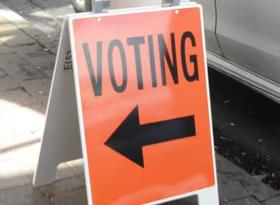Charter schools are a welcome addition
The formation of a new government under MMP is a time of horse trading and when the small parties have their best opportunity to influence government policies. Often this can feel like the "tail wagging the dog", but the strength of National’s electoral position means that it can be more selective about the policies it adopts from its minor partners. Irrespective of the underlying motive, the proposal announced in National’s Supply and Confidence Agreement with ACT to introduce Charter Schools should be considered a positive development for New Zealand’s education system.
Charter schools are a relatively recent American innovation with the first school opening in 1992. Today there are over 5,000 charter schools in the United States. Yet it remains a minority form of schooling, teaching fewer than 2% of US students. This minority aspect may explain why the current proposal is to focus on South Auckland and Christchurch; one needs a reasonable population base to justify the creation of any new schools. Indeed New Zealand’s population base may yet prove too small and widely distributed to support a charter school system.
But what charter schools potentially offer is an alternative for students or segments of society whose needs are not well catered for by the public school system. In general, the New Zealand public school system performs very well. New Zealand students compare very well in international studies, such as the OECD PISA study, not only relative to the performance of top and average students, but also in terms of the ability demonstrated by low achievers. Yet any national system, however well performing, will not meet the needs of everyone. For many, particularly the more wealthy, the private school system provides viable alternatives to the public system. Indeed, school enrolment data suggests that an increasing proportion of New Zealanders prefer to send their children to private schools, despite the presence of a strongly performing public school system.
What charter schools potentially offer is an extension of choice for families that do not have adequate finances to send their children to private schools. Indeed the US evidence is that charter schools tend to locate in disadvantaged neighbourhoods and serve students who are substantially poorer than the average public school student.
So how do they work in the US? Like regular schools they are supported by public funds and do not charge for tuition. Unlike regular public schools, they receive fees on a per student basis, but usually at a rate less generous than is provided for public schools. Charter schools in the US cannot select their students based on admission tests or similar criteria. Instead students wishing to go to an oversubscribed charter schools are chosen by lottery.
Although there is debate about the academic performance of charter schools, the fact that 65% of charter schools in the US were oversubscribed in 2010 (up from 59% in 2008) indicates that they are meeting a need that is not being met by the public system. The Annual Survey of America's Charter Schools 2010 indicated that an average of 239 children are waiting to enter each charter school in the US. With an average charter school size of 372 students, it is estimated that the number of students on waiting lists would fill another 5,000 charter schools.
Charter schools have achieved their popularity, not through big budgets as they typically receive lower levels of public funding than the public school system, but by offering programmes, services, and teaching formulas that parents want but can't find in traditional public schools.
Charter schools generate a lot of controversy, with people tending to hold extreme positions. One of the points of contention revolves around the exemption from regulation about teacher certification. Debate about charter schools quickly polarises into a turf war that is perhaps more about the relative merits of unionisation than it is about the merits of charter schools to children and their families. Yet the language of the debate centres on views of whether students perform better or worse in the different systems. Unfortunately, ascertaining the relative performance of the different systems is actually a highly complex task, and people are able to find evidence to support whatever their prior beliefs are.
Ultimately, my view on the value of charter schools is coloured by the obvious popularity of the schools for many American families. The US example also indicates that there is a wide variety of different types of charter schools, and hence a wide range of aims and abilities. The introduction here will bring failures as well as successes. However, their presence will provide an alternative that will make a positive difference for many children. The US experience should also temper expectations; charter schools are unlikely to herald a revolution in the public school system. It is a small step towards increasing education choice, which should be welcomed but should not be expected to be the source of major changes to the mainstream education system.







